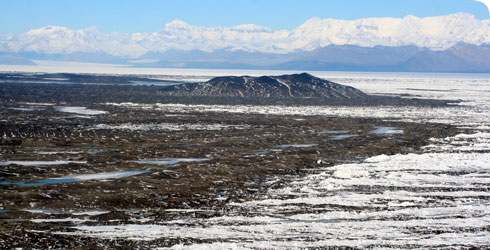Behaviour
Biofilm and microbial mat formation
Phormidium pseudpriestleyi and other filamentous cyanobacteria can colonise Antarctic freshwater sediments because they are able to cope with extreme conditions such as limited nutrients, high salt concentrations and intense UV radiation.
They are also able to move by gliding.
Biofilms form when cyanobacteria colonize an area and grow to such a high number that they form a continuous layer on top of a substrate. As they are filamentous - hair-like - they form a web or three-dimensional matrix.
They stay attached to the substrate by producing sticky substances. These so-called exopolymeric substances also enhance the matrix-structures.
Once the matrix structure is formed, other bacteria and microbial eukaryotes colonise the cyanobacterial biofilms and it becomes a microbial mat.
Microbial mats are characterised by a vertical stratification of different microorganisms. The chemical and physical gradients along the mat matrix are a result of the different metabolic activities of the inhabiting organisms and surrounding environmental conditions.
